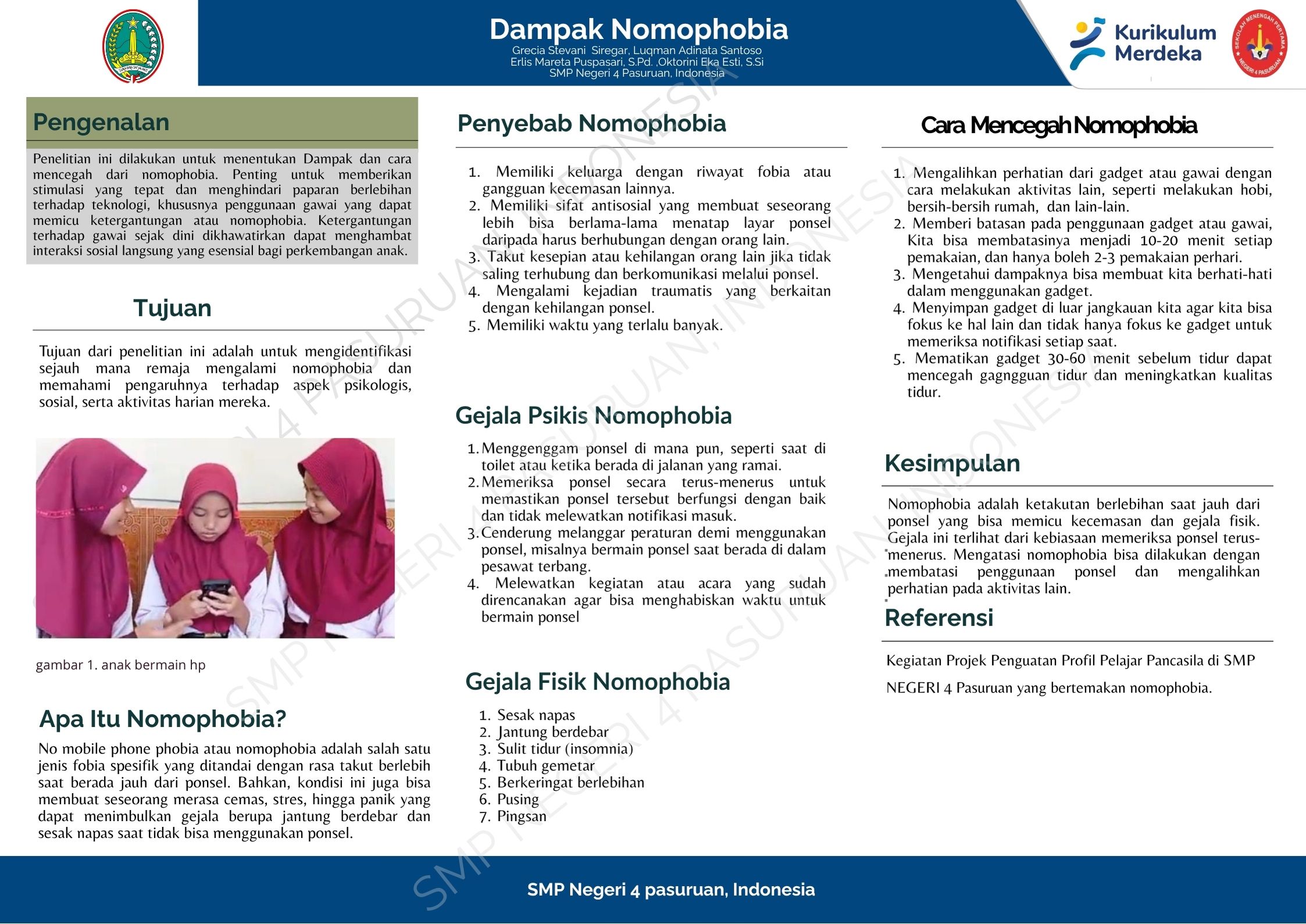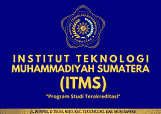Dampak Nomophobia
Keywords:
Nomophobia, teknologi, perkembangan anakAbstract
Penelitian ini dilakukan untuk menentukan Dampak dan cara mencegah dari nomophobia. Penting untuk memberikan stimulasi yang tepat dan menghindari paparan berlebihan terhadap teknologi, khususnya penggunaan gawai yang dapat memicu ketergantungan atau nomophobia. Ketergantungan terhadap gawai sejak dini dikhawatirkan dapat menghambat interaksi sosial langsung yang esensial bagi perkembangan anak.
Downloads
Download data is not yet available.

Published
2024-05-30
How to Cite
Siregar, G. S. . ., & Santoso, L. A. (2024). Dampak Nomophobia. Applied Observation and Pedagogical Studies Poster, 3(1). https://doi.org/10.61650/aops.v3i1.818
Issue
Section
Articles
License
Copyright (c) 2024 Grecia Stevani Siregar, Luqman Adinata Santoso

This work is licensed under a Creative Commons Attribution-ShareAlike 4.0 International License.

 SMP Negeri 4 Pasuruan, Indonesia
SMP Negeri 4 Pasuruan, Indonesia













 All publications by the CV. Bimbingan Belajar Assyfa [e-ISSN:
All publications by the CV. Bimbingan Belajar Assyfa [e-ISSN: